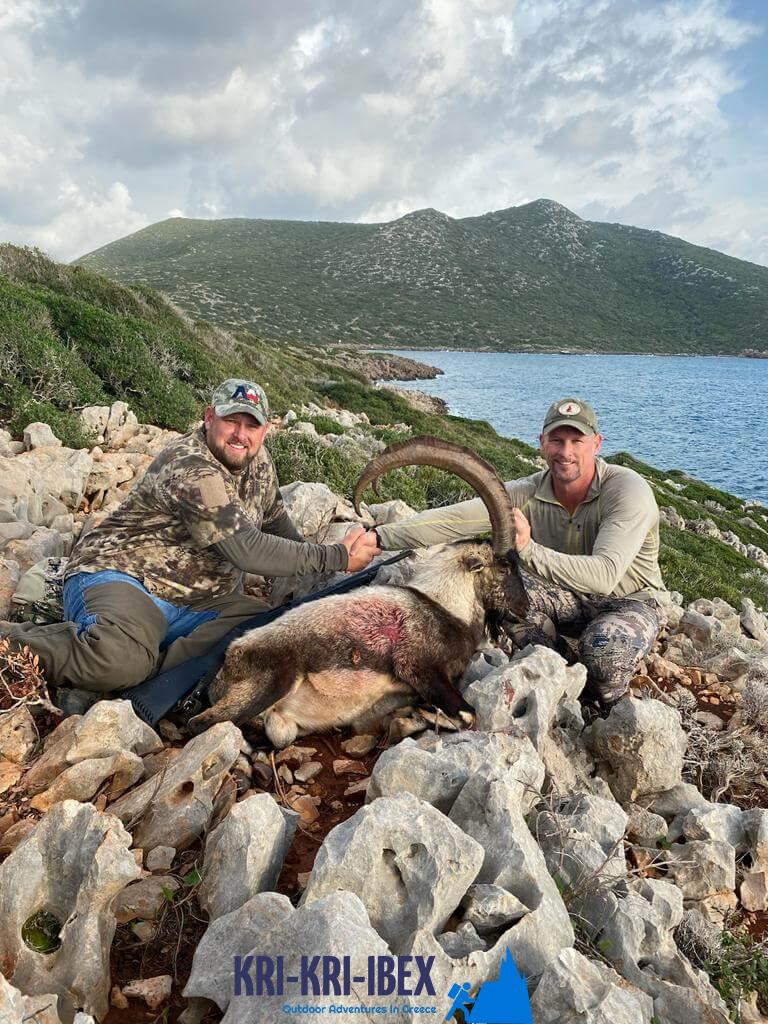
Searching for Kri Kri ibex in Greece is an extraordinary getaway as well as an exciting searching expedition all rolled into one. For the majority of seekers, ibex searching is a hard task with miserable conditions, but not in this situation! Throughout five days of touring old Greece, diving to shipwrecks, and also spearing, you'll experience beautiful Kri Kri ibex on an unique island. What else could you want?

There is no set variety of Ibexes, as the population fluctuates. The Kri-Kri is the smallest ibex varieties (Capra Aegagrus Cretica) in terms of body weight, however it has some lengthy horns. Even though some specimens were measured at 115 cm in size, they were not counted in the survey. Hunting of the Kri-Kri ibex is presently occurring in Greece. An Ibex gold prize procedures 24 inches long. Hunting is allowed on Atalanti and Sapientza islands. On Atalanti, hunting is permitted from the last week of October to the very first week of December. Hunting in Sapientza is allowed the whole month of November, assuming the weather is favorable.
Our outdoor hunting, angling, and free diving excursions are the excellent method to see every little thing that Peloponnese has to use. These scenic tours are made for vacationers that intend to leave the beaten path and really experience all that this amazing area needs to use. You'll reach go hunting in some of one of the most stunning wilderness areas in Greece, fish in crystal-clear waters for a range of different types, as well as cost-free dive in several of one of the most sensational coast in the Mediterranean. And best of all, our experienced guides will exist with you every step of the means to see to it that you have a safe and also enjoyable experience.
If you are searching for Kri Kri ibex quest and also remarkable trip destination, look no more than the Sapientza island in Greece. With its magnificent natural elegance, tasty food, as well as abundant society, you will not be let down. Book one of our searching and visiting Peloponnese Tours from Methoni today, dot forget your trophy Kri Kri ibex!
What is the diference between Kri Kri ibex, Bezoar ibex and hybrid ibex
The kri-kri is not thought to be indigenous to Crete, most likely having been imported to the island during the time of the Minoan civilization. Nevertheless, it is found nowhere else and is therefore endemic to Crete. It was common throughout the Aegean but the peaks of the 8,000 ft (2,400 m) White Mountains of Western Crete are their last strongholds–particularly a series of almost vertical 3,000 ft (900 m) cliffs called ‘the Untrodden’—at the head of the Samaria Gorge. This mountain range, which hosts another 14 endemic animal species, is protected as a UNESCO Biosphere Reserve. In total, their range extends to the White Mountains, the Samaria National Forest and the islets of Dia, Thodorou, and Agii Pandes.
This Ibex is NOT a diminutive form of the Bezoar Ibex, which has migrated into the western-most reach of the range of this species. The kri – kri (Capra aegagrus cretica), sometimes called the Cretan goat, Agrimi, or Cretan Ibex, is a feral goat inhabiting the Eastern Mediterranean, previously considered a subspecies of wild goat. The kri-kri has a light brownish coat with a darker band around its neck. It has two horns that sweep back from the head. In the wild they are shy and avoid tourists, resting during the day. The animal can leap some distance or climb seemingly sheer cliffs.
“The agrimi goat Capra aegagrus cretica is unique to Crete and its offshore islands. It has been identi®ed as a sub-species of the wild bezoar goat Capra aegagrus aegagrus Erxleben, 1777, which it closely resembles in horn shape, body form and coloration. This classi®cation has been disputed by some researchers who claim that the agrimi are feral goats, derived from early domestic stock brought to the island by the ®rst Neolithic settlers. In order to clarify this issue, DNA analyses (cytochrome b and D loop sequences) were carried out on tissue of live and skeletonized agrimi and compared to sequences of wild and domestic caprines. Results conclusively show the agrimi to be a feral animal, that clades with domestic goats (Capra hircus) rather than with wild Asiatic bezoar. This study demonstrates that morphometric criteria do not necessarily re¯ect genetic af®nities, and that the taxonomic classi®cation of agrimi should be revised.”